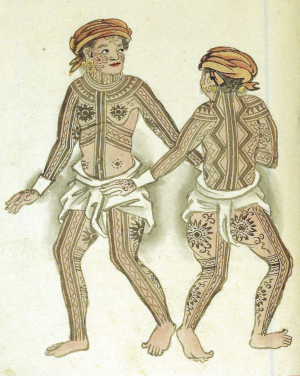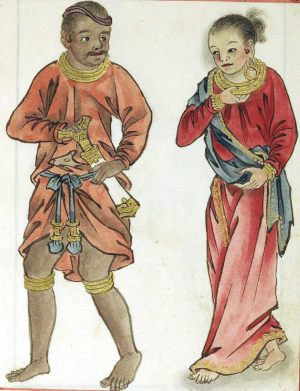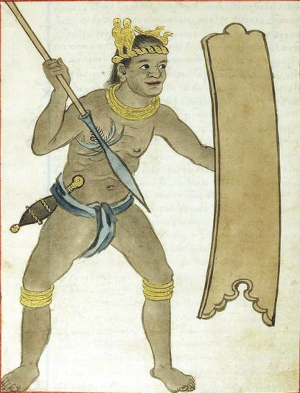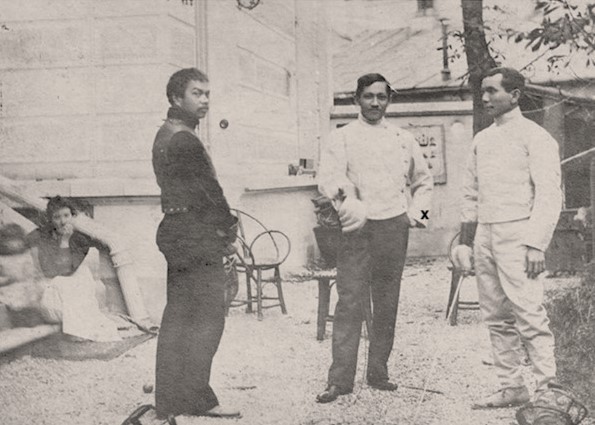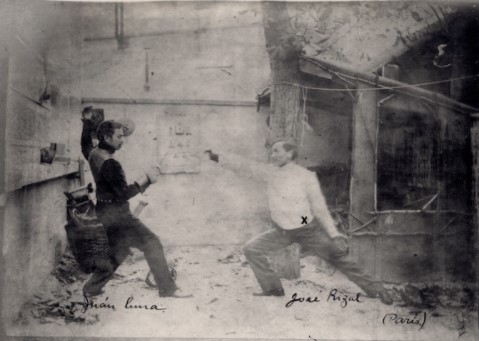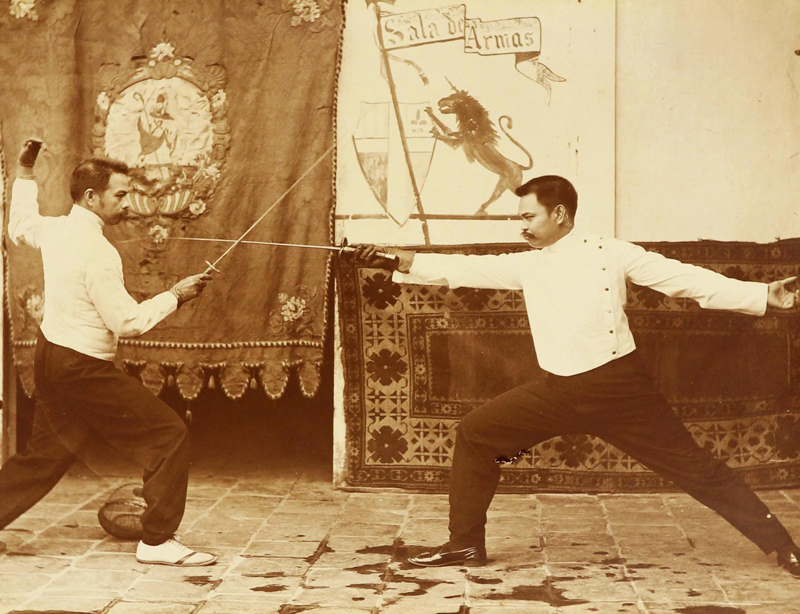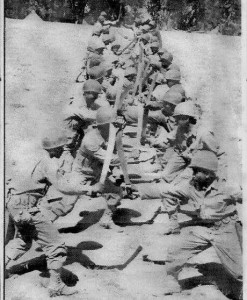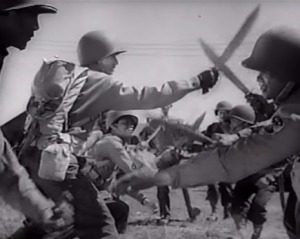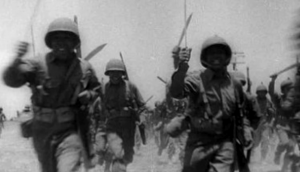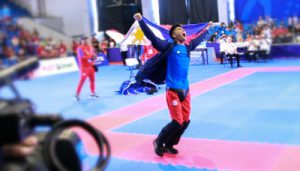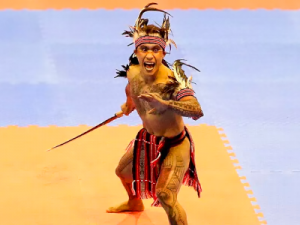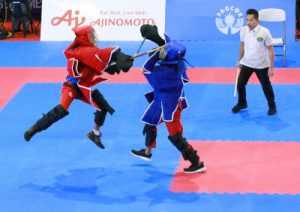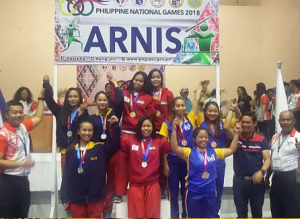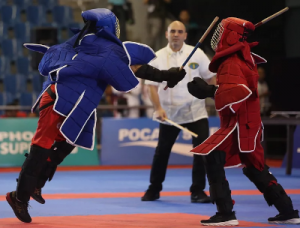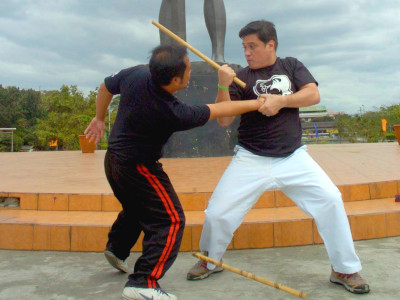EXPLANATORY NOTE
BY GM RICHARDSON C. GIALOGO
Sino-Spanish codex (Boxer codex), ca. 1590. Boxer mss. II. Indiana University, Bloomington, Indiana.
Arnis is the Filipino indigenous martial art of stick fighting. It is also known throughout the world as Eskrima, Kali, Garrote, and various other indigenous names like Pananandata (Tagalog), Pagkalikali (Ibanag), Kalirongan (Pangasinan), Kaliradman (Bisaya), Didya (Ilokano), etc. It is said that this fighting method is the one used by Lapu Lapu when he vanquished Magellan in the famous Battle of Mactan. According to Pigaffeta, the natives used bladed weapons and “sticks hardened by fire”. In 1564, after 43 years since Magellan touched our soil, Don Miguel Lopez de Legaspi with his 380 strong army were surprised to see the natives performing their indigenous fighting styles. In Abuyog, Leyte, in the middle of February, 1564, they were welcomed in a feast by the local chieftain Malitik and part of the festivities were exhibitions of the native martial art. This is a proof that we do have an indigenous martial art.
During the Spanish era, the practice of this martial art was outlawed by the Spaniards. It so happened that the Spanish war propaganda against the Moros encouraged the staging of various socio-religious plays called the “Moro-Moro” plays, wherein the Spanish were portrayed as victorious in battles against the Moros of Mindanao. It is a form of black propaganda to show the natives that the Spanish race and their religion is superior than that of the natives’. There is only one plot in these plays: a muslim prince/princes falls in love with a Christian prince/princess. Because of this love affair, the two kingdoms would have an “en grande” battle wherein the Christians always winning and the Muslims always losing and are converted to Christianity. It is believed that the practice of Arnis was hidden in the guise of these mock battles, and this is how Arnis as a martial art survived through 400 years of persecution.
Love & heartbreak for Rizal & Luna at León Gallery Auction
https://www.philstar.com/lifestyle/business-life/2019/06/10/1924999/love-heartbreak-rizal-luna-len-gallery-auction
José Rizal and Juan Luna Fencing (center and right photos) https://www.facebook.com/photo?fbid=10157834415217635&set=a.302878262634
Even our very own National Hero, Dr, Jose P. Rizal, studied Arnis. In his memoirs in Dapitan, he taught Arnis to the children of Dapitan. The likes of Marcelo H. Del Pilar, Juan and Antonio Luna and the other members of the La Solidaridad studied Arnis aside from fencing in Ateneo de Municipal under Don Juan de Azes who operated a club of Spanish Fencing and Filipino Eskrima called Tanghalan ng Sandata.
Point of clarification, Arnis is not the STICK, it is the indigenous Filipino system of fighting with or without using weapons. Thus during the Katipunan era, we saw the katipuneros brandishing their bolos. The katipuneros fought our colonizers with the common and ubiquitous bolos, the farm tool. And because of the tenacity of our fighting art, we succeeded in the revolution.
And during the Philippine-American war, Arnis was used. During this time, the caliber.45 revolver was invented because of the tenacity of the moro juramentados. American servicemen required a gun with a stronger stopping power since American flesh still get hacked by Filipino blades even if they shoot the Filipino freedom fighters with their Krag rifles and .38 revolvers.
The same martial art was even used in the most recent World War, WWII. Guerilla forces used bolos in attacking the Japanese Imperial Army in raids and ambushes. It is also well documented that Filipino Commandos of the USAFFE based abroad trained and used Arnis in preparation for the Liberation of Manila. The Bolo Battalion was part of the USAFFE.
Many instances point to the important role of Arnis in the Filipino History of libertarian struggle. This highlights the fact that, without an efficient system of fighting, our unsung heroes could have not done it. These are just examples how effective our indigenous Filipino martial arts is. We should therefore develop our PATRIMONY and take good care not only of our tangible cultural heritage (like Spanish Churches & cathedrals, monuments, nature, etc) but our intangible cultural heritage too.
The martial arts principles of Arnis is designed for self-defense against armed or unarmed attacks. It is usually done using rattan sticks or other similar implements, in three different forms: single cane, double cane of the same length, or two implements with varying length (espada y daga/ sword and dagger). Or, it could be done without canes like simply using the bare hands by following the prescribed techniques. Practitioners could also use bolos, kris, swords and other implements like knives, ballpens and bottles as substitutes. Even as a sport, its benefits include instilling discipline, character formation, and the development of skills of the practitioners. And like Karate, Judo and Kendo of Japan, or Tae Kwon Do of Korea, or Wushu and Kung Fu of China, or Muay Thai of Thailand, the Philippines can now be proud to have its own National Martial Art and National Sports that is at par with other world-class martial arts. It is likewise felt that Arnis, more than any other sport or martial art, may prove to be a means for international excellence by the Filipinos.
Conformably, therefore, with the provisions of the Constitution which call upon the State to “promote education and encourage sports programs, league competitions, and amateur sports, training for international competitions, to foster self-discipline, teamwork, and excellence for the development of a healthy and alert citizenry,” and with the directive that “all educational institutions shall undertake regular sports activities throughout the country in cooperation with athletic clubs and other sectors: [Art. XIV, Sec. 19, pars (1) and (2)]”. It is proposed that the inclusion of Arnis be required in all National Games, programs and activities, sanctioned by the Philippine Sports Commission (PSC), the Department of Education (DepEd), the National Commission for Culture and Arts (NCCA) and the Department of Tourism (DOT).
Definitely, it is felt that Arnis, more than any other sport or martial art, deserves to be the National Martial Art and National Sports of the Philippines because of the legacy it has given and has contributed in the building and development of the Nation.
Since time immemorial, it is through Arnis that the bravery of our forefathers stood out in the defense of the motherland.

